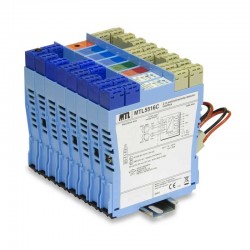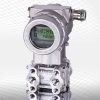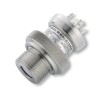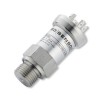 A guide to intrinsic safety measurement instrumentation including explanations, applications and choice of products for installing in hazardous areas.
A guide to intrinsic safety measurement instrumentation including explanations, applications and choice of products for installing in hazardous areas.
Intrinsically safe certification is a standard used to limit the amount of energy, heat or ignition sources entering a hazardous zone which may contain a potentially flammable or explosive atmosphere.
Typically a sensor installed in a hazardous area is connected to measurement instrumentation via a zener diode or galvanic (transformer) isolated barrier system located in a safe area.
The sensor is matched with the barrier system so that the barrier will prevent any voltage and current levels exceeding limits defined in the sensor intrinsic safety approval parameters.
Any electrical energy exceeding the barrier limits will be redirected to ground/earth in the case of the zener barrier or blocked in the case of the galvanic (transformer) isolated barrier.
Intrinsically safe certification is controlled and regulated by a government’s health and safety department in the country where the measurement instrumentation is to be installed and used. Commercial organisations are appointed to provide assessment and approval services to industry.
Browse intrinsically safe measurement instrumentation by product type for use in hazardous areas with an intrinsic safety barrier.
 Underground Mining Intrinsically Safe Pressure Transmitters - Pressure transmitters which have been approved for use with intrinsically safe installations in underground mines.
Underground Mining Intrinsically Safe Pressure Transmitters - Pressure transmitters which have been approved for use with intrinsically safe installations in underground mines. Intrinsically Safe Liquid Level Sensors - Liquid level sensors with intrinsic safety approval for measuring the level of fluid contents where flammable gas or dust is present.
Intrinsically Safe Liquid Level Sensors - Liquid level sensors with intrinsic safety approval for measuring the level of fluid contents where flammable gas or dust is present.  Intrinsically Safe Pressure Data Loggers - Intrinsically safe (IS) pressure data loggers which can be used in potentially explosive environments such as oil refineries, offshore oil platforms and natural gas distribution.
Intrinsically Safe Pressure Data Loggers - Intrinsically safe (IS) pressure data loggers which can be used in potentially explosive environments such as oil refineries, offshore oil platforms and natural gas distribution. Intrinsically Safe Pressure Gauges - Intrinsically safe pressure gauges which are Ex certified for use in areas where flammable or explosive substances are stored or processed.
Intrinsically Safe Pressure Gauges - Intrinsically safe pressure gauges which are Ex certified for use in areas where flammable or explosive substances are stored or processed. Intrinsically Safe Pressure Transmitters - Choose an intrinsically safe pressure transmitters with a 4 to 20 milliamp output which is certified for use as part of an intrinsically safe installation.
Intrinsically Safe Pressure Transmitters - Choose an intrinsically safe pressure transmitters with a 4 to 20 milliamp output which is certified for use as part of an intrinsically safe installation.
Questions & Answers
USA version of ATEX II 2 G
What is ATEX II 2 G classification and what is the USA equivalent?
This refers to the ATEX Ex coding which is the European regulatory directive for using equipment in hazardous areas.
- II = Non-Mining
- 2 = Non-Mining: High Protection – Equipment must be safe during regular functioning and likely failures, required for Gas zone 1 and/or Dust zone 21
- G = Explosive Gas environment
Hazard area equipment is approved by FM Approvals (Factory Mutual) in the USA, and this chart shows a comparison between FM (top) and ATEX (bottom) markings, according to this chart the equivalent FM marking for ATEX II 2 G is:
- 2 = Division 1, Zone 1
- G = Class 1 (Gases, Vapours or Liquids)
